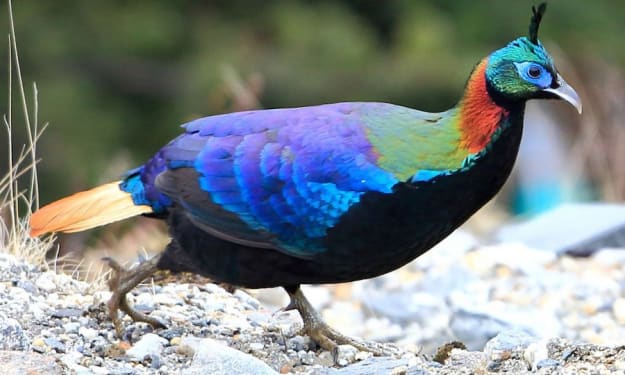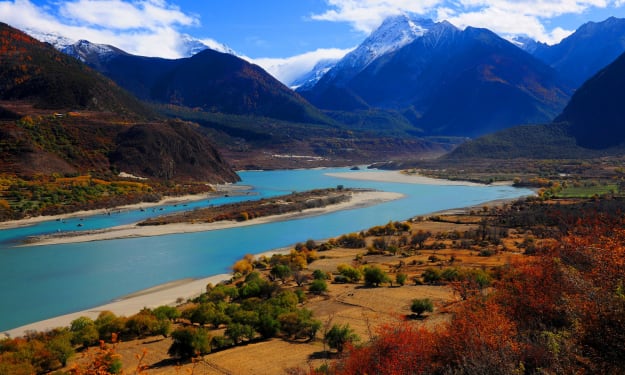Penguins Unveiled
A Symphony of Life in the Southern Seas

A group of birds without wings that have evolved specifically for living in the water are called penguins. Although some species live in temperate zones, they are mostly found in the Southern Hemisphere and are members of the Spheniscidae family.
The following are some essential traits of penguins:
Physical Modifications:
Penguins can move across the water more quickly because of their streamlined bodies.
Instead of helping them fly, their wings have developed into flippers that help them swim.
To keep them warm in the frigid water, they are covered in a thick coating of impermeable feathers.
Habitat:
Although they live on several sub-Antarctic islands as well as the southern coasts of South America, Africa, Australia, and New Zealand, penguins are most often associated with Antarctica.
Certain animals, such as the Galápagos penguin, are found close to the equator.
Action:
Being gregarious birds, penguins frequently establish sizable colonies for both breeding and safety.
On land, they are recognized for their unusual waddling gait.
Nutrition:
The main food sources for penguins are fish, squid, and other small marine animals.
In the water, they are nimble and skillful hunters.
Animal:
Penguins come in a variety of species, each one tailored to its own habitat. Adélie, King, Emperor, and Chinstrap penguins are a few of the species that are well-known.
Procreation:
Typically, a pair binds for the mating season in the monogamous breeding system of penguins.
Both parents alternately incubate the eggs and tend to the chicks after they are laid in rock nests.
Preservation:
A number of problems, such as habitat damage, overfishing, and climate change, have made several penguin species vulnerable or endangered.
Because of their intriguing nature and excellent adaptation to their aquatic habitat, penguins are frequently the focus of attention and research in the fields of biology and ecology.
Of course! Here is some more information regarding penguins:
Interaction:
Penguins use displays, vocalizations, and body language to interact with one another.
Calls, songs, and unique noises used to identify mates or chicks are examples of vocalizations.
Adjustments for Cold Climates:
Penguins can drink seawater and get freshwater from their prey because they have a unique gland near their tails that lets them expel excess salt.
In order to assist preserve body heat and stop heat loss in cold conditions, certain species have developed a counter-current heat exchange mechanism in their legs.
Swimming Proficiency:
Because of their exceptional swimming abilities, penguins can swim quite quickly. They move using their flippers and steer with their feet.
Their body form, which resembles a torpedo, reduces drag and makes swimming more effective.
Molting:
Penguins renew and shed their feathers during an annual molting process. Since they can't swim or forage during this phase, they must accumulate fat before molting in order to survive.
Hunters:
Penguins are threatened by seals, sharks, and orcas among other predators when they are in the water.
Penguin chicks may be threatened by raptors such as gulls and skuas when they are on land.
Migration:
Certain species of penguins migrate seasonally, visiting new locations in quest of food or for breeding purposes.
Different species migrate to different extents.
Investigation and Preservation:
Scientists investigate penguin behavior, ecology, and the effects of changing environmental conditions on penguin populations.
To secure the future of penguin species, conservation efforts concentrate on preserving their habitats, managing fisheries responsibly, and tackling climate change.
Culture in Popular Culture:
In popular culture, penguins are frequently depicted in documentaries like "March of the Penguins" and motion pictures like "Happy Feet."
They are occasionally regarded as representations of resiliency, flexibility, and camaraderie.
Recall that there are various penguin species, each with special traits and adaptations of its own. Researching these birds advances conservation efforts against environmental obstacles and advances our knowledge of their biology.
Of course! Let's explore some of the particular aspects of penguins in further detail:
Diversity of Species:
Depending on the categorization scheme, between 18 and 20 species of penguins are recognized.
Every species, from the massive Emperor penguin to the tiny Little Blue penguin, has unique traits and adaptations.
The Emperor Penguins:
At three to four feet tall, the emperor penguin is the largest species of penguin.
With a brilliant orange patch on their chest and a black and white coloring, they are well-known for their distinctive look.
During the Antarctic winter, emperor penguins must endure bitter cold and complete darkness in order to reproduce.
Adélie Seals:
Adélie penguins are distinguished by their tuxedo-like features, which consist of a white front and a black rear and head.
They live mostly on the Antarctic mainland and adjacent islands, where they frequently establish sizable breeding colonies.
Penguins of the Galapagos Islands:
The only species of penguins found north of the equator are the Galápagos penguins. They live on the Islands of Galápagos.
Being the smallest species of penguins, they are better able to disperse heat in the warmer climate because of their diminutive stature.
Penguins with chinstraps:
The thin black band that runs beneath the chin of chinstrap penguins is the source of the name.
Large colonies of them breed, and they are recognized for their unique vocalizations, which resemble a string of high-pitched cries.
Penguins that Rock Hop:
A characteristic of rockhopper penguins is their spiky black and yellow feather crest on their head.
They are renowned for their hopping gait, which allows them to easily navigate over uneven terrain.
Impact of Climate Change:
Penguins are seriously threatened by climate change, which has an impact on their habitats and availability of prey.
The eating and breeding behaviors of different penguin species can be affected by changes in sea ice patterns.
Preservation Activities:
To preserve penguins' food supplies, conservation organizations seek to create marine protected areas, preserve penguin habitats, and encourage sustainable fishing methods.
Research and monitoring initiatives assist in compiling information on penguin populations and evaluating the effects of environmental modifications.
Aquariums and Zoos:
Around the world, zoos and aquariums house certain species of penguins, which helps spread knowledge and interest in these amazing birds.
The goal of captive breeding initiatives is to aid in the preservation of some threatened species.
The camouflage of penguins:
In the water, penguins' black and white coloring helps them blend in with their surroundings. Their white bellies merge with the sunlight that filters through the water when viewed from below, while their black backs blend with the depths of the ocean when viewed from above.
These extra features offer a more thorough look at the varied world of penguins, emphasizing their special traits, adaptations, and difficulties that they encounter in their natural habitats.
About the Creator
Aadhya_love_0710
Living the dream;
Keep it real;
Less is more;
Smile, it's free;
Simplicity is the key to happiness...






Comments (1)
nice